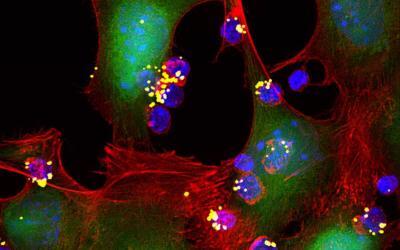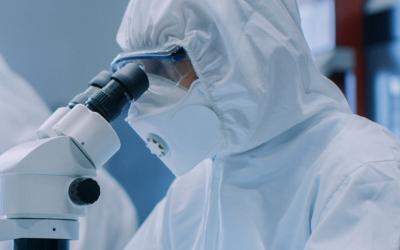Pharmaceutical Cleanroom News
Get the latest pharmaceutical cleanroom news and updates below. Cleanroom Connect brings you the latest news from around the world, featuring current topics and news in the Pharmaceutical and Biotech industries.
Prosthetic Heart Valves Design Inspired by Dragonfly Larvae
The dragonfly larva is the only insect that uses jet propulsion to move and the only arthropod known to use reciprocal jetting—inhaling and exhaling through the same orifice—for underwater breathing,” says Roh, the lead author of a paper on the larval jets that was published online by the journal Bioinspiration & Biomimeticson May 30.
Moderna Opens Manufacturing Facility for mRNA Therapeutics
the manufacturing facility was designed to achieve Leadership in Energy and Environmental Design (LEED) certification. Moderna is limiting energy use with advanced energy metering, LED lighting, and systems designed to reduce water usage by up to 25%.
Lilly Diabetes helpline Assists People Seeking Affordable Insulin
Lilly Diabetes Solution Center will assist people who need help paying for their insulin – such as those with lower incomes, the uninsured, and people in the deductible phase of their high-deductible insurance plans, Eli Lilly and Company (NYSE: LLY) announced today. A customized suite of solutions for all Lilly insulins, including for Humalog® (insulin lispro), will be used by helpline operators to find answers that best fit the personal circumstances of patients.
Better enabled kidney exchanges for improved health and cost savings
Platforms for kidney exchanges such as the National Kidney Registry and the Alliance for Paired Donation provide a lifeline for people on the waiting list by expanding the pool of potential donors by matching potential recipients with living donors they’ve never met.
Sensile Medical is Being Acquired by Gerresheimer AG
Gerresheimer will acquire the Swiss technology company Sensile Medical and thereby significantly expand its business offerings. For the Sensile Medical business, this will open up new opportunities and synergies with existing and potential new customers.
Kinesin Proteins Study New Doors Open for Cancer Drug Innovation
The research involved kinesin proteins: tiny, protein-based motors that interact with microtubules inside cells. The motors convert chemical energy into mechanical energy to generate the directional movements and forces necessary to sustain life. Microtubules are microscopic tubular structures that have two distinct ends: a fast-growing plus end and a slow-growing minus ends. Microtubules help make up a cell’s skeleton.
Flexible Packaging Cleanroom Expansion
Today PPC Flexible Packaging announced it has completed the first phase of a greater than $2 million facilities and equipment investment aimed at expanding and further upgrading production capacities for its Precision Clean™ cleanroom packaging business. The company purchased its Buffalo Grove based business as Fisher Container Corporation in February 2017.
Herpes Linked to Alzheimer’s Disease
“It was as long ago as 1991 when we discovered that, in many elderly people infected with HSV1, the virus is present also in the brain, and then in 1997 that it confers a strong risk of Alzheimer’s disease in the brain of people who have a specific genetic factor.”
Neural Circuits Controlled By Sound Waves
In the maze of our brains, there are various pathways by which neural signals travel. These pathways can go awry in patients with neurological and psychiatric diseases and disorders, including epilepsy, Parkinson’s, and obsessive-compulsive disorder. Researchers have developed new therapeutic strategies to more precisely target neural pathways involved in these conditions, but they often require surgery.
Gene Editing Therapy Made Safer With New CRISPR Technique
Scientists from The University of Texas at Austin took an important step toward safer gene editing cures for life-threatening disorders, from cancer to HIV to Huntington’s disease, by developing a technique that can spot editing mistakes a popular tool known as CRISPR makes to an individual’s genome. The research appears today in the journal Cell.
Immune Cells Boosted by Nanoparticles
By developing nanoparticle “backpacks” that hold immune-stimulating drugs, and attaching them directly to T cells, the MIT engineers showed in a study of mice that they could enhance those T cells’ activity without harmful side effects. In more than half of the treated animals, tumors disappeared completely.
Biotechnology Innovation Platform Launched by HKU
Biotechnology Innovation Platform Launch expected to become a national-level technology startup incubator. It aims to host at least 50 spinoff companies and commercialize the results of at least 10 HKU research projects within five years. The platform will focus on key areas including cancer treatment, medical devices and infectious disease treatment.
Pharmaceutical News
Pharmaceutical Cleanroom News and Advancements
The Pharmaceutical Cleanroom Industry or medicine industry is the commercial industry that discovers, develops, produces, and markets drugs or pharmaceuticals for various uses and formations of medicines and medications. The pharmaceutical cleanroom industry produces the controlled aseptic cleanroom environments where by the pharmaceutical products are created and packaged. Pharmaceutical companies create a various array of products for different applications.
The primary developments of Pharmaceutical companies are generic medications, branded pharmaceuticals and medical devices. The pharmaceutical companies are subject to a variety of laws and regulations that govern the patenting, testing, safety, efficacy and marketing of drugs. Cleanroom Connect provides the latest Pharmaceutical Cleanroom News from various pharmaceutical and biopharma industries. Subscribe today to receive pharmaceutical and biopharmaceutical news and updates directly to your mailbox.
Pharmaceuctical Cleanroom News | Biotechnology Industry News | Medical Device News
The Pharmaceutical Cleanroom Industry is a booming industry, and production has been growing exponentially over the past few decades as innovations in the medical field have taken off. This increasing production has also led to increasing demands for safety features installed in industrial pharmaceutical manufacturing plants and storage areas. These safety procedures ensure the health of employees as well as the safe preservation of products that are stored for later use by consumers.











